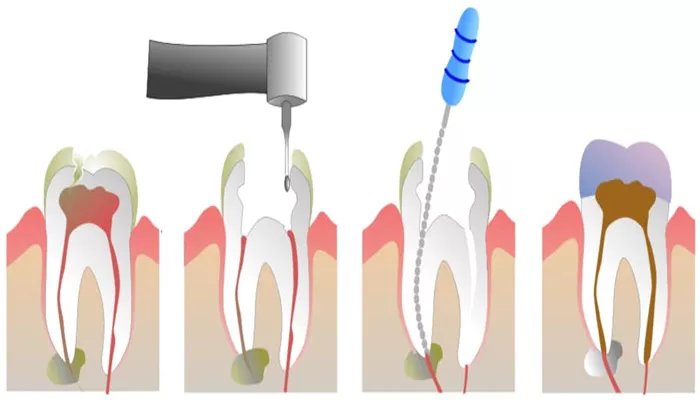A tooth filling is a common dental treatment used to repair cavities and prevent further decay. However, in some cases, a filling may not be enough to fix the problem. If decay has progressed too far, other treatments like root canals or extractions may be necessary. This article will explain when it is too late to get a tooth filling and what options are available if a filling is no longer suitable.
What Is A Tooth Filling?
A tooth filling is a dental procedure used to restore a tooth that has been damaged by decay. The dentist removes the decayed portion of the tooth and fills the space with a special material, such as:
- Composite resin (tooth-colored filling)
- Amalgam (silver filling)
- Gold
- Porcelain
Fillings help prevent cavities from getting worse and protect the tooth from further damage.
When Can A Tooth Be Filled?
A filling is effective when the decay is limited to a small or moderate portion of the tooth. The following conditions indicate that a filling may still be possible:
The cavity is small and has not reached the tooth pulp.
The tooth structure is strong enough to support a filling.
There is no severe pain or infection in the tooth.
If the decay is detected early, a filling can be a quick and effective solution.
Signs That It May Be Too Late for a Filling
If decay is not treated in time, the damage may become too severe for a simple filling. Here are some signs that indicate a filling may no longer be an option:
1. Severe Tooth Pain
If you have persistent, throbbing pain in a tooth, it may indicate that the decay has reached the inner layers, such as the dentin or pulp. At this stage, a filling is usually not enough, and a root canal or extraction may be needed.
2. Deep Cavities
When a cavity is too deep, it can compromise the strength of the tooth.
A filling may not provide enough support, and a crown or root canal may be required.
3. Tooth Sensitivity to Hot and Cold
Mild sensitivity is normal for some cavities, but extreme sensitivity could mean the decay has reached the nerve. If this happens, a filling alone will not fix the problem.
4. Swollen or Bleeding Gums
If the gums around a decayed tooth are swollen, red, or bleeding, it could be a sign of infection. Infected teeth often require more advanced treatments.
5. Tooth Discoloration
A tooth that has turned dark brown, black, or gray may indicate deep decay or a dead nerve. In such cases, a filling will not be enough to save the tooth.
6. Tooth Fractures or Weakness
When a tooth is significantly weakened by decay, a filling may not be able to hold it together. A dental crown or other restorative procedure may be necessary.
What Happens If A Filling Is No Longer An Option?
If a tooth cannot be repaired with a filling, your dentist may recommend one of the following treatments:
1. Root Canal Treatment
If the decay has reached the pulp (the soft tissue inside the tooth), a root canal may be needed. This procedure removes the infected tissue, cleans the inside of the tooth, and seals it with a filling or crown.
2. Dental Crown
A crown is used when a tooth is too damaged for a filling but does not need extraction. The dentist removes the decayed portion and covers the remaining structure with a custom-made cap to restore strength and function.
3. Tooth Extraction
If the tooth is severely decayed and cannot be saved, extraction may be the only option. After removal, a dental implant, bridge, or denture can be used to replace the missing tooth.
How to Prevent Tooth Decay from Getting Worse
To avoid situations where a filling is no longer an option, follow these steps:
Visit the Dentist Regularly – Regular checkups help catch cavities early before they become severe.
Practice Good Oral Hygiene – Brush twice a day, floss daily, and use fluoride toothpaste to strengthen your teeth.
Avoid Sugary Foods and Drinks – Sugar contributes to tooth decay, so limit sodas, candies, and other sugary snacks.
Use Dental Sealants – Sealants provide extra protection against cavities, especially for molars.
Get Fluoride Treatments – Fluoride helps strengthen enamel and prevent decay.
Conclusion
A filling is a great way to repair a cavity, but it is only effective when the decay is caught early. If a tooth is too damaged, other treatments such as a root canal, crown, or extraction may be necessary. The best way to avoid severe tooth decay is through regular dental checkups and proper oral hygiene. If you suspect you have a cavity, see your dentist as soon as possible to prevent further damage.

